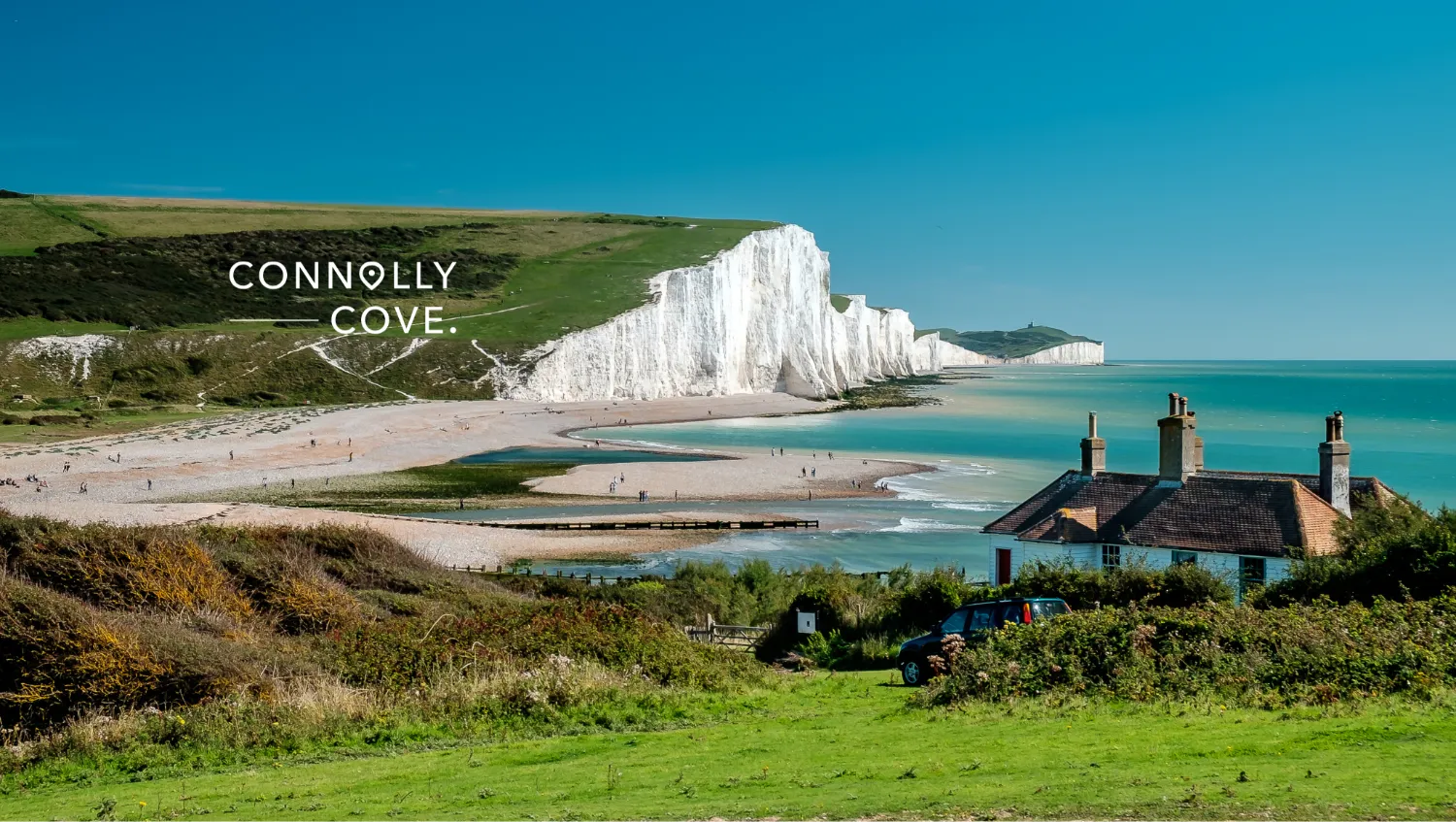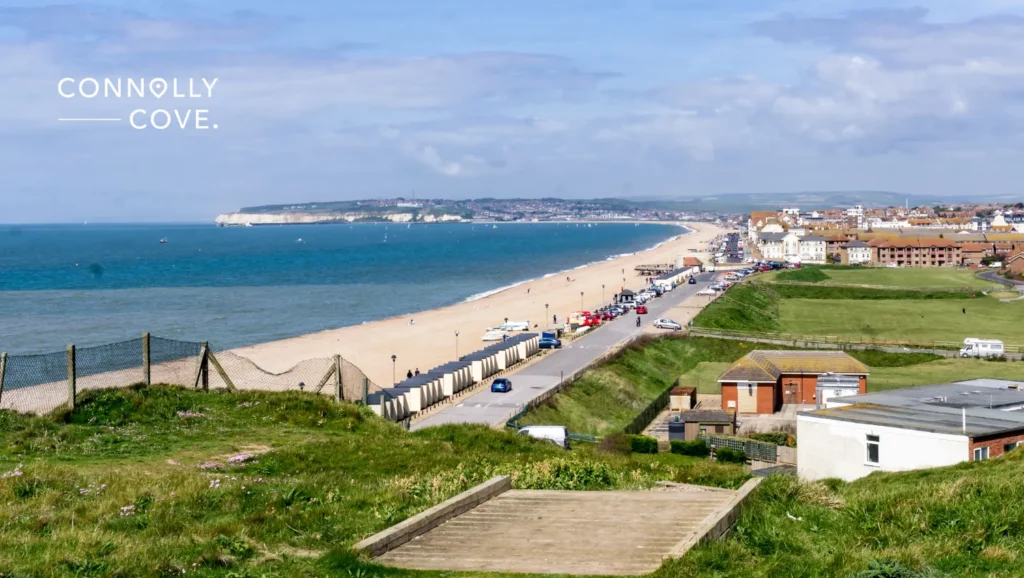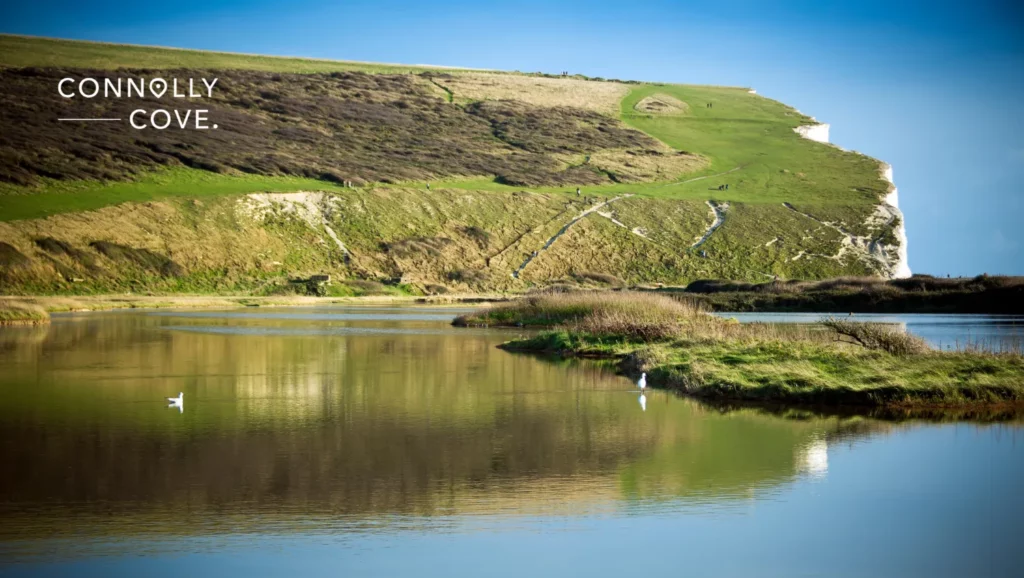Seaford Town and Beach: A Magnificent Seaside Town

Updated On: November 10, 2023 by Aya Radwan
In southern-east England, in Sussex, is the beach town of Seaford. This town has a rich history of standing against prying eyes and forces thinking of using its shores as an entrance to the island. Over the centuries, Seaford fought off raids, pirates and vandalisers, all of which are courageous stories retold in the town’s main museum.
Come with us to visit Seaford Town and Beach, with its wondrous chalk mountains, green plains and magnificent tranquil gardens.
Seaford Town and Beach: A Look Back

Once an important Southern England harbour, Seaford is a mischievous town in East Sussex. French pirates and accumulated sedimentation damaged the harbour, and eventually, it fell into disrepair. Unfortunately, Seaford burnt down numerous times from the mid-14th century to the mid-16th century due to French raids. In the same century, locals used to rob all wrecked ships; it was even rumoured they caused ships to capsize after accidentally hitting the seaside cliffs by installing fake lights.
The 19th century brought prosperity to Seaford by installing a railway, which helped connect the town to the nearby county town of Lewes and the British capital, London. After spending much of its history as a seaside town and, later, a seaside resort, Seaford is a commuter town or a dormitory town. This means that the town is mainly residential and doesn’t have many commercial businesses or corporations. Seaford is the commuter town for nearby Eastbourne and Brighton.
Ball sports are a favourite activity in Seaford, with numerous talented local teams in cricket, rugby, and football. The town has a team for each sport that competes in its name: the Seaford Cricket Club, the Seaford Rugby Football Club and Seaford Town. Additional sports in Seaford include golf, bowling and swimming.
Things to See and Do at Seaford Town
Seaford might be a small town, but it’s full of interesting landmarks to visit, magnificent natural heritage and exciting places to play sports and have absolute fun.
Seven Sisters Country Park
Ash-white chalk mountains that erode over time from seawater are the white chalk sea cliffs overlooking the English Channel. These cliffs are nestled between River Cuckmere from Seaford and the tip of Beachy Head outside Eastbourne. The name Seven Sisters came from the existence of seven cliffs which the seawater shaped like crests. Dry valleys separate each crest from the other and are gradually eroding from seawater. At the Seven Sisters Country Park, you can enjoy a quiet picnic or rent a bike and journey through the park’s numerous trails.
The Seven Sisters is a favourite filming location and attracted many successful global franchises, such as Robin Hood: Prince of Thieves, Atonement and Mr. Holmes. The Seven Sisters Country Park is the park that links these seven crests on land and represents a part of the South Downs National Park as well. Although now there are only seven cliffs, with seven dips between them, the sea is still eroding the mountains, and a new and eighth cliff is forming.
Seaford Head Nature Reserve
A little to the east of Seaford is the Seaford Head Nature Reserve, which is rich in green vegetation, flowers and butterflies. The reserve gives you the best view of Cuckmere Valley and the Seven Sisters chalk mountains. There is chalk grassland, scrub, wet grassland and saltmarsh. The reserve’s natural habitants welcome visitors to marvel at their beauty. The magnificent, clustered bellflowers with their incredible lavender colour and the once medical flower squincywort are among many flower species in the nature reserve. The Adonis blue and Chalkhill blue butterflies are among the reserve’s natural residents.
Driftwood Garden
Are you looking to spend some time in a marvellous oasis by the sea, surrounded by beautiful and aromatic flowers and plants? Then, Driftwood Garden is the perfect place to visit. The garden has a personal style and is a magnificent place to take a relaxing break and enjoy hearty homemade cakes with warm tea, served in delicate chinaware. Driftwood Garden’s beauty was featured numerous times in magazines and newspapers, such as the Sunday Telegraph and the Weekend Magazine.
The garden will appear for a second time on BBC’s Gardeners’ World after its runner-up position in the competition in the 2016 season. The tickets you pay all go to charity, and even though the 2023 season is over and the garden is closed for the remainder of the year, the new season starts a couple of months away, in 2024.
Cuckmere Haven

Laden with wartime worn-out machinery and pillboxes, Cuckmere Haven was once the gate to invading England. The haven is an area of flood plains at the meeting point of the River Cuckmere and the English Channel. From the 16th century and for two more, smugglers used the beach to smuggle and steal goods. The wartime mementoes on the beach date back to WWII, when the British government built counter-landing defences and fortifications after the German aerial military inspected the area.
With its oxbow lakes, the haven has become a popular tourist attraction near Seaford, with more than 350,000 visitors per year. Cuckmere Haven is home to diverse wildlife species, from sheep and cattle to woodpigeons, rooks and oystercatchers. Moreover, the pebbles or the shingles that form the beach dance under your feet in a wide array of beautiful colours. If you’re lucky enough to visit during low tide, you might catch the late 19th-century German ship, the Polybesia, which ran aground west of Beachy Head.
Seaford Museum
Seaford’s main and local museum, the Seaford Museum and Heritage Society, has the most unusual location. One of the town’s defensive forts from the 19th century called a Martello Tower, houses the town museum. This specific tower, which holds the museum, was built during the Napoleonic Wars and is one of the fortifications of the coastal line along Kent and Sussex. The two-storey building was built between 1806 and 1810 and is surrounded by a brick-lined moat. The tower served its purposes until the last quarter of the 19th century.
Before the Lewes District Council bought it in the mid-1970s, the tower was once a cafeteria, and the moat was a skating rink, among various other uses. Before the end of the 1970s, the council inaugurated the museum. The Seaford Museum is home to many domestic, maritime and military artefacts retelling the town’s history and neighbouring towns. You can visit the visitor centre, the museum shop and the archives are available to visit once every month.
Seaford Beach
Come for some fun at this rural and beautiful beach. Seaford Beach has numerous lifeguards, but they’re not always on duty. There are many food kiosks at the beach, colourful beach huts for hire, cafés, ice cream venues and an interesting Martello Tower. If you’re lucky to visit during low tide, you might enjoy the beach’s sandy shore because the beach is pebbly.
If you’re looking for extra relaxation time at the beach, you can hire a beach hut which has many service facilities. It’s worth mentioning that the Environment Agency regularly checks the purity of the beach’s water, and the result normally comes as one of the purest seawater beaches in the world.
Cupani Garden
Imagine you’re in a tranquil haven with beautiful flowers and plant fixtures and perfectly aligned trees that embrace the gazebos for you to sit and breathe. All these features are the description of Cupani Garden in Seaford. The heavenly beautiful garden is named after the monk who introduced sweet peas to the island. When Francis Cupani brought sweet peas to England at the turn of the 17th century, this species was also widely planted in Sicily.
Cupani Garden consists of several smaller gardens, each with its own species. From the fernery, the formal courtyard and the cutting patch, you are welcome to enjoy your time and meditate among the garden’s breathtaking beauty. You can also enjoy some tea with a light bite, take a look through the wide variety of home produce and perhaps buy a plant or two from the various plants on display. Seaford awarded Cupani Garden the Bloom in Plantsman’s Cup in 2010.
Friston Forest
The perfect location for walking, trekking and camping, Friston Forest is an incredible forest between Seaford and Eastbourne. The mid-20th century forest has fertile chalk and limestone soil, which was the ideal soil for planting beech, and it represents the majority of the forest’s trees. There are trails and pathways in this magnificent portion of the South Downs National Park.
Friston Forest is the perfect getaway for the family to spend a day away from the everyday hustle and bustle. You can even rent BBQ gear and enjoy a smoky, delicious meal outside. You might even spot a bear or two at the heart of the forest.
Coastguard Cottages
When you arrive at the Seaford Head Nature Reserve, take a short wall alongside the Seven Sisters until you reach the unmistakable Coastguard Cottages; you cannot miss them. When you stand at the cottages, you’ll get a fantastic view of the Seven Sisters cliffs and the sea as it continues to hit against the mighty chalk mountains. The raw beauty of this location doesn’t hint a bit at its dark history.
The coastguards fought against criminals, saved men from sinking ships and helped salvage belongings. They performed this job in addition to their role in protecting the South against foreign invasion. One of the reparations after WWII included the building of a wall which continuously fell off, even after reconstruction in the following decades. At the cottages, you will see and feel the magnificent history seeping through the cottages’ walls.
The Crypt Gallery
This National Heritage monument is the oldest building in Seaford. The storage place of once a wealthy merchant in Medieval England consisted of numerous storage underground vaults, which explains the gallery’s name. The current exhibition space is believed to have stored wool and high-value goods, but now it displays artistic works of local and international artists all year round. Moreover, live music shows, poetry and speaking events take place at the crypt for its incredible acoustics.
Saint Leonard’s Church
After the Crypt Gallery, a portion of Saint Leonard’s Church is the oldest surviving building in Seaford. The central church at the heart of the town dates back to the 1100s in Medieval England. The tower of this historic place of worship is visible from any place in Seaford, from the town’s entry to the chalk cliffs of the Seven Sisters.
Moreover, locals host major events at the church, such as community occasions, school celebrations and services for war veterans. The salty sea water ate the inscriptions on d the majority of the headstones in the adjacent cemetery, adding to the church’s solemn feel. The church serves as a sanctuary for those who belong to the church and those who don’t.
Seaford Head Golf Course
Fancy trying your best club swing? Then head to the Seaford Head Golf Course, one of England’s most picturesque golf courses. The late 19th-century golf course has 18 holes; you’ll certainly hit them all if you don’t let the views distract you. After bringing your A-game, you can enjoy a nice meal and refreshments at the on-site clubhouse.
Our visit to Seaford, wandering about the town and enjoying the various landmarks and relaxing activities, filled us with incredible joy and satisfaction. We hope you’ll feel the same too!






